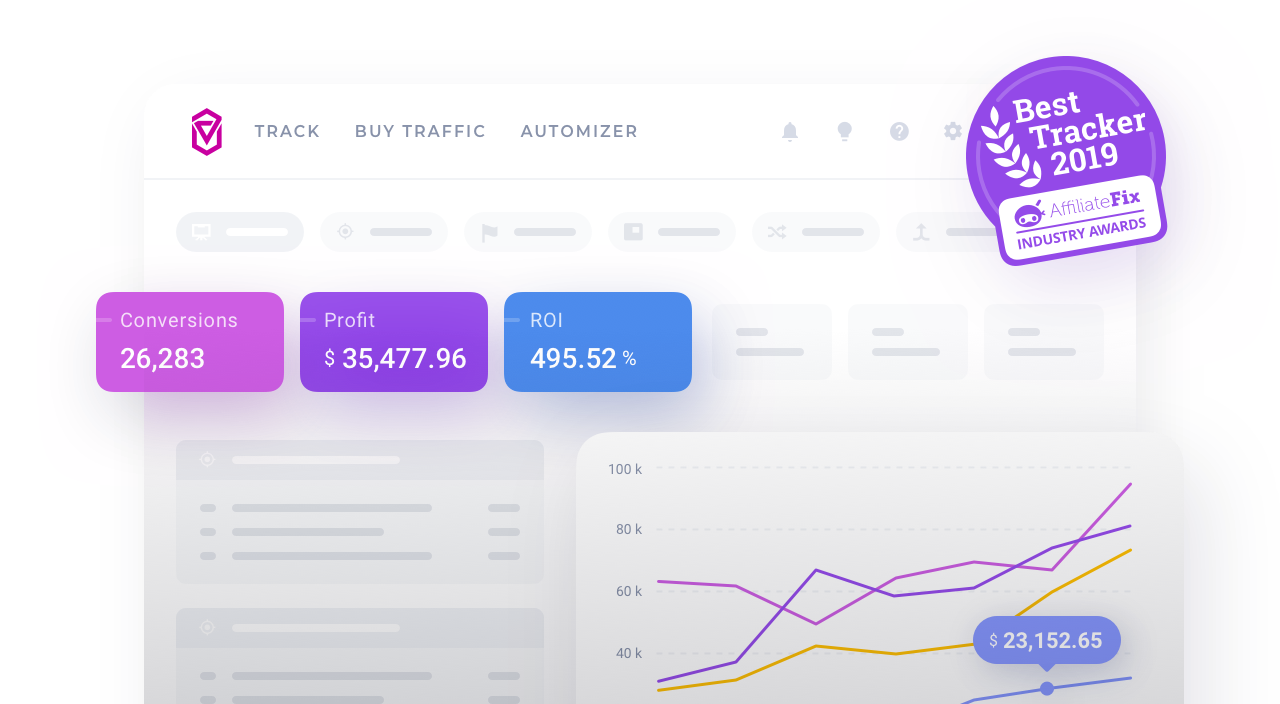III. Start advertising
The remaining thing to do is to start a campaign in Facebook Ads (now Meta Ads).
- In Facebook Ad Manager, create a campaign with an ad set and an ad as normal. Provide all traffic targeting options, budget details, creatives and other.
- Go to the Ad level.
-
Select placement for your ad, to show your ad in Facebook Feed or in Instagram Stories.

-
Provide your Lander tracking URL in the Website URL text field.

Back to top
(Optional) Set up passing conversions to Facebook
If you want to pass conversion info to Facebook Ads (now Meta Ads) to train their algorithms, do the following:
-
In Voluum Automizer, in the Traffic Sources tab, click the Generate button in the postback URL column of the Facebook integration.

-
Provide a conversion action name in the Type in Facebook Conversion Action text field.
If you want to track various types of conversions, you need to generate separate postbacks for each conversion type. Do that by providing a Facebook conversion name in the Type in Facebook Conversion Action text field and provide additional details in tokens that accompany this conversion. Generate one postback, move it to any text editing tool, and generate another for a different conversion type. You can find the list of Facebook conversion types here.

Alternatively, you can use the
{eventType}token to replace the conversion action name automatically. However, this solution will only work if your custom conversion values are the same as Facebook's ones. - Copy the postback URL to the clipboard.
- Edit the Facebook traffic source.
http://lander.com?fbclid=fbclid&ad_id={{ad.id}}&adset_id={{adset.id}}&campaign_id={{campaign.id}}&ad_name={{ad.name}}&adset_name={{adset.name}}&campaign_name={{campaign.name}}&source={{site_source_name}}&placement={{placement}}&cpid=823aeedb-9511-4523-b06b-de947db34ccchttp://lander.com?&ad_id={{ad.id}}&adset_id={{adset.id}}&campaign_id={{campaign.id}}&ad_name={{ad.name}}&adset_name={{adset.name}}&campaign_name={{campaign.name}}&source={{site_source_name}}&placement={{placement}}&cpid=823aeedb-9511-4523-b06b-de947db34cccAdd ‘fbclid’ parameter in your traffic source template under ‘External ID’ to make sure that {externalid} token will return its’ value and manually remove it from your tracking links, as Facebook will add them automatically anyway. Do, if you have the Direct Tracking URL that looks something like this:
You should remove the last part, so it looks like this:
-
Set up passing conversions:
-
For passing one conversion type, enable the Traffic source postback URL option and paste the postback URL that you have just copied.

-
For passing various conversion types, enable the Traffic source postback URL per event type option, select the custom conversion event and paste the appropriate postback URL.

-
Back to top
Congratulations, you have done it!


